Opinion
13A and federalism: US manoeuvrings since 1980s

By Daya Gamage
Former US State Department
Foreign Service National Political Specialist
Activating the 13th Amendment and devolution of power – possibly with the merger of two provinces –seems to have returned to the national agenda with President Ranil Wickremasinghe taking a lead role. He undertook a similar endeavour as the prime minister in 2001-2004 during the Bush Administration with its Secretary of State Gen. Colin Powell and his deputy Richard Armitage playing a significant role during the Norwegian-initiated peace talks.
Washington policymakers and lawmakers had a very clear agenda: having a strong belief that Sri Lanka’s minority Tamils were discriminated against by the Sinhalese ‘chauvinists’ and their ‘Sinhalese-controlled’ administration, and Tamil grievances could be redressed only with the adoption of a federal system.
The US policy toward Sri Lanka’s ethnic issue has long been guided by the comforting notion that Tamil self-government within a decentralised Sri Lankan state would satisfy the legitimate needs of that minority community and shield it from Sinhalese oppression. The system of dispersing power federally is so deeply rooted in the US political culture that Americans tend to be uncritical in assessing its implications for governance, national unity and social justice. In the light of America’s mixed experience with federalism, one could question whether it is reasonable for Washington to press a small island nation to adopt a federal system when the evidence suggests that beyond a certain degree of administrative and political de-concentration, it would not be a good fit.
Washington believed that the Tamil community (accounting for 12% of the Sri Lankan population) had fewer economic and employment opportunities when compared to the ‘advantaged’ 74% Sinhalese majority, and it would benefit from a federal system.
Washington policymakers arrived at this determination way back in the 1980s, long before the signing of the infamous Indo-Sri Lanka Accord. That determination governed the mindset of the policymakers and lawmakers in the U.S. through 2009 and to date.
Vital documents
I will now disclose contents of two 1980s documents developed in Washington, and they formed Washington’s foreign policy agenda in respect of Sri Lanka, and it to date, in my belief, has remained unknown to Sri Lankan policymakers. Ignorant of these policy determinations, Sri Lanka during those years engaged in discourses with international players
It is also vital to disclose how the Political Office of the United Nations (UN) – always a domain of retired US Foreign Service (FS) Officers – in collaboration with State Department and White House officials – endeavoured to prepare a path to ‘impose’ a federal system in Sri Lanka in keeping with the determinations of those two documents, which escaped the attention of Sri Lankan authorities and prevented them from formulating Sri Lanka’s own independent foreign and national policies beneficial to all ethnic communities.
Washington’s ignorance of the demographic formation of Sri Lanka, caste factor especially among the northern Tamil community, which initially sparked the northern rebellion, dueling nationalisms, economic factors that have affected all ethnic groups, influenced the formulation of the US foreign policy agenda.
Classified 1984/1986 US Documents Advocating Federalism
Here are the two United States Government documents that underpin its policy toward Sri Lanka. The naïve manner in which Sri Lanka has handled its foreign policy dealings and its national agenda placed it on a slippery slope.
In June 1984, the Directorate of Intelligence (CIA) and the State Department’s Near East and South Asia Bureau (NEA) jointly prepared a document called ‘Failure to Share Political Power with Minority Groups’. Declaring President Jayewardene’s commitment to his Sinhalese-Buddhist constituency at the height of the July 1983 communal riots, it said “by the general election of 1956 Sinhalese-dominated parties had gained control of the government and driven the small Tamil parties out of the mainstream political life.”
Another document dated September 02, 1986 and authored jointly by the CIA and the NEA noted that ‘northern insurgency’ had politicised Sri Lanka’s Sinhalese and Tamil communities. The ethnic rivalry is at the heart of the conflict, the document says, adding that the Tamils believe – with some adjustments – they need some devolution of power to their districts and that they are victims of political and economic discrimination, suggesting that Washington refrain from providing military assistance to the Sri Lanka administration, as it noted even in another document that Washington shouldn’t get involved in a battle between two ethnic communities.
These three documents laid the foundation for the subsequent structure of Washington’s foreign policy toward Sri Lanka all the way until the end of the separatist Eelam War IV in May 2009 and well beyond.
Washington sentiments
Washington sentiments were amply reflected in this 1984 classified document. This June 1984 document, subsequently declassified, had most revealing sentiments that played a major role in subsequent years during Washington’s intervention in Sri Lanka’s national issues, one of which was the proposal for a federal system in Sri Lanka solely and exclusively focusing on minority Tamil issues.
Washington’s initial (1984) understanding was that a federal structure would extensively satisfy the Tamil demands. The document states, “Tamil demands probably would be satisfied by a federal structure that would guarantee Tamils control over security and economic development where they comprise the majority of the population”. This belief was notably expressed by State Department Foreign Service Officers (FSOs) at frequent intervals in subsequent years when Washington intervened in Sri Lankan national affairs; in keeping with this agenda the USAID in 2005, with active participation of top officials of the U.S. Embassy in Colombo, continuously for three months, convened nationwide public seminars with the assistance of civil society groups underscoring the merits of federalism.
This writer and his State Department associate, Senior Foreign Service (FSO) and Intelligence Officer Dr. Robert K. Boggs, have already addressed these issues deeply in a manuscript currently being prepared – ‘Defending Democracy: Lessons in Strategic Diplomacy from U.S.-Sri Lanka Relations’. It is to be released through an international publisher soon. The two authors’ thirty-year experience, knowledge and understanding of Washington’s foreign policy dealings with the South Asian region centering Sri Lanka and India, and their subsequent research and collection of (mostly hidden) data – most of which the Sri Lankan policymakers never knew even existed (or their infantile approach to national issues never took those seriously) will be featured in this book with their (unconventional) interpretations and analyses. Both authors had extensive experience and gained vast knowledge of Washington’s foreign policy trajectory in the South Asian region and its dealings with Sri Lanka and India during their official engagements in Colombo, New Delhi, Mumbai and Washington.
The June 1984 classified ‘intelligence assessment’ expressed fear that if Washington was seen associating with a regime that battles a minority group it could “damage the U.S. prestige in the region and in parts of the Third World and that highly politicised Tamil minority in Sri Lanka might even turn to the Soviet Union for support.” (It is with this rationale that Washington deeply engaged during the 2002-2004 peace talks that it believed could bring favourable acceptance in the international community).
The direct quote is: “Increased identification with Jayewardene at this time could damage US prestige in the region and in parts of the Third World. It could be perceived by other small ethnic groups as acceptance by the United States of the use of repression against minorities. Moreover, elements of the highly politicised Tamil minority in Sri Lanka might even turn to the Soviet Union for support.”
The June 1984 ‘Intelligence Assessment’ further declares “Tamil demands probably would be satisfied by a federal structure that would guarantee Tamils control over security and economic development where they comprise the majority of the population” – meaning the North-East region of Sri Lanka.
The document opined that Washington believed “the Tamils have become convinced that they should have an autonomous homeland with economic and security control.”
What the June 1984 document says about the United States refusal to extend military assistance to the (American-friendly) Jayewardene regime’s request to combat the LTTE terrorism and its total blocking of the supply of military gear to the subsequent Rajapaksa regime during (2006-2009) its military offensive against the separatist movement led to Washington’s strict belief that such military equipment could be used for “repressive measures against the Tamils.”, and that other avenues need to be found such as devolution of power and setting up a federal structure.
Lalith Athulathmudali
The then National Security Minister Athulathmudali reached to this writer somewhere in May 1987 to convey the regime’s displeasure at the U.S. ambassador the US Department of Defence’ (USDOD) administrative action preventing American arms manufacturing corporations selling combat equipment to Sri Lanka; the matter was extensively discussed in a tense atmosphere at a National Security Council session chaired by President Jayewardene.
The document justifying Washington’s refusal to provide military assistance says, “Some of these weapons would have been useful beyond immediate internal security needs.”
Following are taken from ‘Sri Lanka: The Challenge of Communal Violence’ , a joint intelligence assessment by the Directorate of Intelligence (CIA) Office of Near Eastern and South Asia Bureau of the State Department. June 1984 Secret document subsequently declassified:
1. President Jayewardene’s failure to deal with the demands of Sri Lanka’s Tamil minority – 18 percent of the population – has brought the Tamils to the brink of open insurrection. In our judgment, Jayewardene, through his political manoeuvering since his election in 1977, has contributed to the deterioration of communal relations by failing to share political power with minority groups
2. Tamil demands probably would be satisfied by a federal structure that would guarantee Tamils control over security and economic development where they comprise the majority of the population.
3. The Tamils, according to Embassy and scholarly reports, have become convinced that they should have both an autonomous homeland and control over security forces and access to more economic development projects.
4. We believe the frustrations of the last year have convinced even moderate Tamils they must press for a separate homeland with the hope of achieving at least a federal relationship with Colombo.
Subsequent U.S. Manipulation for a Federal System
In early 2012, under the auspices of the Office of the Under Secretary-General of the United Nations (Political Affairs) B. Lynn Pascoe, attended by many professionals that included President Barack Obama’s close confidante and information czar Prof. Cass Sustein and his wife Dr. Samantha Power, the U.S. President’s human rights-war crimes-genocide crusader in the National Security Council, to start a process of restructuring several developing Third World nations’ constitutional arrangements to promulgate federalism as an answer to ethnic minority grievances.
The Under-Secretary-General (Political) B. Lynn Pascoe was a retired career diplomat from the US State Department.
Since the early 2012-process commenced a number of closed-door meetings and seminars at which the partition of UN member states has been discussed. Most of the meetings have been held under the direction of the UN Interagency Framework for Coordination on Preventive Action (the Framework Team or FT). The control of the FT fell into the domain of the under-secretary-general of Political Affairs Jeffrey Feltman, who took over from Pascoe in June 2012.The UN slot in the Department of Political Affairs, for decades, has always been assigned to a retired American Foreign Service officer (FSO), and it is the second most influential position next to the Secretary-General.
When a former American FSO occupies the Number Two slot of the UN, the State Department has extensive leverage over the operation of the United Nations, and it has been seen that both branches – the Department of Political Affairs and the US State Department – work together to achieve common objectives. As much as the state department and its representative – US ambassador to UN- maintain jurisdiction over the Human Rights Commission in Geneva under internal UN arrangement, during this period, the Under-Secretary (Political) Jeffrey Feltman oversaw the functioning of UNHRC.
When the process commenced in 2012, Sri Lanka, apart from Nepal, was also a target for the identity federalism engineers.To promote a ‘serious devolution to the peripheral regions’ – whether one calls it federal structure or otherwise – Dr. Samantha Power, who initially attended the Framework Team in early 2012 with the UN Department of Political Affairs, travelled to Sri Lanka in November 2015. So was the UN Under-Secretary-General (Political) Jeffrey Feltman travelled to Sri Lanka for talks in July 2017, during the Sirisena-Wickremesinghe administration.
Richard Boucher, in his capacity as assistant secretary for South Asia in the state department, in one of his official visits to Sri Lanka, at a press conference in Colombo on June 1, 2006, expressed the US policy in this manner: “Although we reject the methods that the Tamil Tigers have used, there are legitimate issues that are raised by the Tamil community and they have a very legitimate desire, as anybody would, to be able to control their own lives, to rule their own destinies and govern themselves in their homeland; in the areas they’ve traditionally inhabited”.
Boucher’s recognition of the “homeland concept” and “traditionally inhabited” areas, the right to “govern themselves in their homeland,” and inalienable right to “control their own lives,” reflect the 1984/1986 initial formation of the policy.
In 1999 Victor L. Tomseth, who was assistant secretary at the State Department in Washington for South Asia (1982–1984), was asked in an interview by Charles Stuart Kennedy for the Association for Diplomatic Studies and Training if they were “involved at all in trying to moderate or do anything about the Tamil movement in Sri Lanka.” Tomseth confirmed that Washington and the embassy in Colombo “were fairly proactive in that…But we, the U.S., were trying to do what we could to encourage some kind of dialogue with responsible Tamil political leaders and pushing on the government a bit to think in terms of some kind of structure through federalism or regionalism that would address a lot of the concerns that a lot of Tamils had, not just the radicals,” he declared.
Mr. Tomseth was later (1984–1986) assigned to Colombo as the deputy chief of mission at the US Embassy.
U.S. Misconceptions and Fallacies – What GoSL Never Understood The U.S. apparently never seriously challenged the fundamental notion that the LTTE represented the interests of all Sri Lankan Tamils and the entire population of the two provinces it claimed as the Tamil homeland. Some 45 percent of all Sri Lankan Tamils (excluding plantation Tamils) live outside the North and East in the South among the Sinhalese, including many of the best educated and most professionally accomplished members of the community.
Pertaining to the northern caste structure, the LTTE was dominated by leaders from only a narrow segment of the caste hierarchy. Given the deep-seated tensions among the various Tamil castes, it is unlikely that many members of either the dominant caste (the Vellarlas comprising about half of the total community) or of the so-called low castes (about 15 percent of the Tamil population) would have agreed that the LTTE spoke for them. In the Eastern Province, which the LTTE claimed in entirety as part of its historical homeland, Tamils of all castes constitute only about 39% of the population there. The Northern Vellarlas think that the Eastern Tamils, known as “Mukkuwars,” rank low in Tamil society. Eastern Tamils expressed, in conversation with this writer, during several tours in the 1980s their deep resentment at northerners’ near-control of the administrative structure of the East.
The US contributed to legitimising the LTTE by exempting it from the organisations being targeted in its war on terrorism (GWoT). Then the international community made a concession of enormous value to the LTTE without receiving any concessions in return. By accepting the Tigers’ claim to be the sole representative of the Tamil people, the West (the US in particular) boosted the LTTE’s prestige, lobbying clout and fund-raising capacity unchallenged by the Sri Lanka governments.
In 2001 the U.S. signed on to a peace process that essentially granted the LTTE diplomatic parity with the Sri Lankan government and artificially limited the discussion to just the two antagonists.
Illegality of the Accord and 13A
Given the persistent salience of the 13th Amendment in Indo-Sri Lankan diplomatic discourse, it would be appropriate to mention the underlying legality of the amendment and its checkered implementation. First, there is a reasonable argument to be made that the bilateral accord – the Indo-Sri Lanka Accord of 1987 – that mandated the devolutionary restructuring of the Sri Lankan government was illegal from the very inception. Although signed by President Jayewardene the accord was crafted and implemented by India by using threat of military action. The threat of forcible intervention must have been perceived as real to persuade President Jayewardene to agree to Indian occupation of the North although that surely added fuel to the Sinhalese insurrection in the South. Lt. Gen. A.S. Kalkat, the Commander of the IPKF during 1987-1990, explained in an interview that Rajiv Gandhi had felt compelled by domestic political pressures from Tamil Nadu to launch the military intervention and that he had extracted the Accord from President Jayewardene by the show of power projection, which was the infamous food drop. The General opined that the Accord, opposed by both the Sri Lankan people and the LTTE, was fundamentally flawed in granting autonomy to one fifth of the population in an area comprising one third of the area of the island. The lesson for India and the US., he said, is that “an outside power cannot give a political dispensation; only the government of the country could give [that to] its citizens.”
But the 13th Amendment was imposed on the country under duress rather than being legislated through democratic debate, and it remains politically controversial. What is less debatable is that the Indian airdrop and intimidatory diplomatic communications from New Delhi to Colombo prior to the IPKF were violative of at least the spirit of Article 2(4) of the United Nations Charter. That UN Article enjoins all member states to “refrain in their international relations from the threat or use of force against the territorial integrity or political independence of any State.” Both the Security Council and the General Assembly have adopted numerous resolutions that contain implicit or explicit references to Article 2(4), condemning, deploring or expressing concern about acts of aggression or the launching of armed intervention. A number of resolutions have included calls for withdrawing troops from foreign territories.
In addition, Article 51 of the Vienna Convention on the Law of Treaties states that an “expression of a state’s consent to be bound by [a] treaty which has been procured by coercion of its representative through acts or threats directed against him shall be without legal effect.” Similarly, Article 52 of the same Convention provides that “a treaty is void if its conclusion has been procured by the threat or use of force in violation of the principles of international law embodied in the Charter of the United Nations.”
Some Indian commentators have argued that Sri Lanka cannot withdraw from the 1987 Accord—and by extension the Amendment—by reason of the Vienna Convention because neither Sri Lanka nor India are signatories to the Convention. The United States has never ratified the Vienna Convention, but its Department of State as early as 1971 acknowledged that the Convention constituted “the authoritative guide to current treaty law and practice,” even for non-parties. Despite being a non-signatory, the U.S. Government has frequently brought cases before the International Court of Justice (ICJ) based on alleged violations of the Vienna Convention. In short, neither India nor the USG has standing under international law to press the Sri Lanka to honor commitments imposed on it illegally.
The Thirteenth Amendment was enacted in the Sri Lanka Constitution as a result of this illegal Indo-Sri Lanka Accord of 1987.
In conclusion, it is essential to state that demographic formation in Sri Lanka is largely ignored by Washington, and Sri Lanka never used it as a negotiating tool. US diplomats who promoted the federal system did not take into account the shifting demography. More Tamils live among the Sinhalese than ever before in the history of the Sri Lankan nation. Tamils in significant numbers left the north and east to settle in the south; they purchase houses and land in Sinhalese-majority areas mostly in the suburban areas. (In fact, no Tamil or any other ethnic community member who has no ancestral roots in the District of Jaffna is allowed to acquire land in that district under the Thesavalamai Law, which is in Sri Lanka’s statute books). In 1981, at the time the LTTE commenced its armed insurrection, 608,144 or 32.8% of Tamils lived outside the northern and eastern provinces. In 2001, approximately 736,480 Tamils lived outside those two provinces. A conservative estimate since December 2004 has been that close to 40% of minority Tamils were domiciled among the Sinhalese outside the two provinces. The Department of Census and Statistics for 2014 reveals that 54% Tamils are living outside north and east. In the capital of Colombo within the city limits and surrounding areas alone the Tamil community is estimated at 30% of the total population of the area.
Another factor that has been ignored: Sri Lanka is 77 percent rural, 19 percent Urban and 5 percent plantation. 77% Rural, Monaragala, Ratnapura, Kegalle. Hambantota in the Sinhalese-majority South, and Vanni, Kilinochchi, Mannar, parts of Trincomalee and Batticaloa in the (total) Tamil districts are included. These rural sectors experience sub-standard education and health facilities, employment issues and less infrastructure facilities. Which means the Sinhalese and Tamils as well as Muslims experience these anomalies. In the Urban 19% sector, the Sinhalese, Tamils and Muslims enjoy all the facilities the Rural Sector population doesn’t enjoy. Extremely well nurtured educational and health facilities, the best infrastructure, employment opportunities and upward mobility in the society is found in these Urban Sectors such as Jaffna, Colombo, Kandy, Galle, Trincomalee in which all three ethnic communities enjoy the fruits of government patronage. These facts have escaped the attention of the Western nations. When going into negotiations Sri Lanka never focused on these.
The devolution, federal structure and Thirteenth Amendment are being discussed without the above-mentioned facts being taken into account.
(The writer is a retired Foreign Service National Political Specialist of the United States Department of State accredited to the Political Section of the U.S. Embassy, Colombo, Sri Lanka from 1980 through 1995. Previous ten years he was engaged in Public Affairs for the State Department. In 2017, he published a research-analytical book ‘Tamil Tigers’ Debt to America: U.S. Foreign Policy Adventurism & Sri Lanka’s Dilemma’)
Opinion
Speaker’s Wig : Why split hairs over a piece of horsehair?
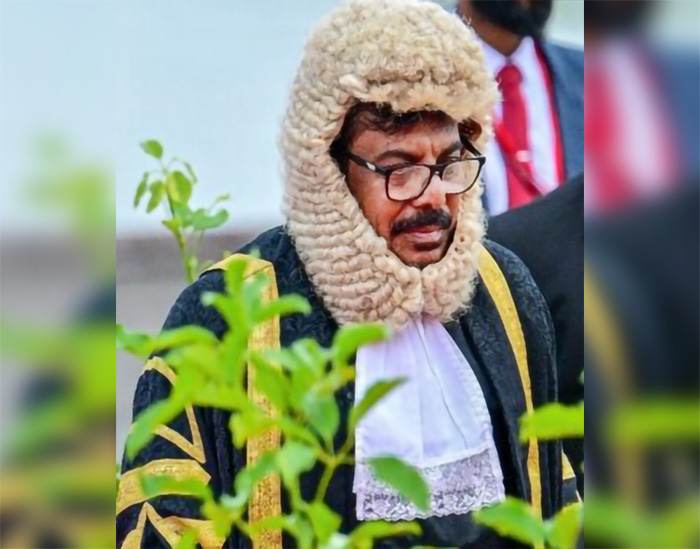
By Gomi Senadhira
I was surprised to read a few comments published in the newspapers and social media about the way the Speaker Ashoka Ranwala wore his speaker’s wig at the ceremonial opening of the parliament. Some of which were extremely unwise, for example, one such comment was, “This shows how stupid the entire parliament is. Please teach the Speaker to wear the wig properly. Looks like he just got off from a motorbike. Has he not seen a Speaker before in his life?”
On ceremonial occasions, the Speaker of Sri Lanka’s parliament wears a black robe trimmed with gold lace and a full bottomed wig. This is a practice we have copied from the British House of Commons where the Speaker wore a black and gold robe over court dress with a white waterfall cravat and a full bottomed wig. In addition to the speaker the clerks, who are the senior officials in the House of Commons, also wore bob wigs and long gowns. Fortunately, we did not adopt that dress code for the officials. Unfortunately, the speaker copied this British fashion from the seventeenth century and continues to follow it.
In 1992, the Speaker Betty Boothroyd, the first female speaker of the British House of Commons, ditched the wig because she “…couldn’t have a good laugh disguised in something so imperious.” Since then her successors too have followed her style and have further simplified other aspects of their costume and started to wear plain black gowns over lounge suits. Furthermore, in 2017 the UK parliament’s Speaker John Bercow ruled that wigs and formal dress will no longer be worn by parliamentary officials in the Commons, ending a 300-year-old practice.
However, the current Commons Speaker Lindsay Hoyle, who was elected to the post in 2019, decided to go back to the old tradition and wear his full ceremonial attire for the State Opening of Parliament by the queen. He also had also directed the Clerks of the House of Commons to wear their bob wigs. So, the Clerks have once again started to wear their wigs. But when it came to the Speakers own wig there was a slight hitch. The horsehair ceremonial hair piece which was last worn by Speaker Bernard Weatherill before his retirement in 1992 had gone missing and the House of Commons officers failed to find it even after an extensive search within the Palace of Westminster. A new wig would have cost over one thousand pounds (£1,320 plus VAT to be exact) to British tax payers. So, if one Googles Lindsay Hoyle, it is possible to find a picture of him walking through the Members’ Lobby in the House of Commons during the State Opening of the Parliament by the Queen, wearing the formal Speaker of the House of Commons regalia, a black and gold robe over court dress with a white waterfall cravat…. but no wig!
That means, it has been three decades since the speaker of the UK’s House of Commons last wore this “imperious” piece of horsehair. In our neighbourhood, the Speakers of the India’s Central Legislative Assembly used to wear robes and wigs while presiding over the meetings of the Assembly from 1921 to 1946. But in 1946 Speaker G.V. Mavalankar stopped that practice. In Australia, the traditional outfit of the Speaker of the House of Representatives included a black academic gown, a jacket, a lace collar and a full wig. But the last time an Australian Speaker wore the full ceremonial outfit was in 1983. The Speaker’s wig, I understand it is on a “loan” to a museum, where it really belongs.
So, isn’t this the proper time to stop splitting hairs over how to wear this ceremonial piece of horsehair and ask why the speaker should continue to wear this glaring symbol of colonial inheritance?
(The writer, a retired public servant and a diplomat, can be reached at senadhiragomi@gmail.com)
Opinion
Remembering Senator Ratnayake – a response
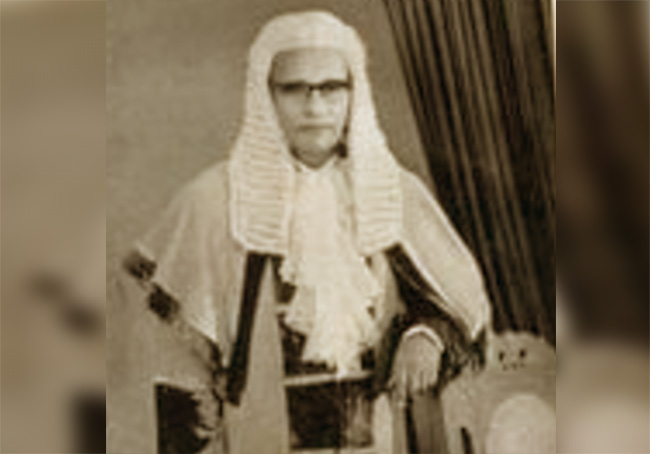
I refer to Maneesha Seneviratne’s excellent tribute to Senator A. Ratnayake in The Island of 25 Nov.
One of the most valuable events in A. Ratnayake’s career stands as a powerful reminder for those who fervently compete for positions in governments and within political parties driven by sheer greed.
This is about how he became the first Cabinet Minister of Food, Co-operatives, under D S Senenayake. Ratnayake had often been a vocal critic of D. S. Senanayake and his policies during their time in both the State Council [in 1936-47] and later in Parliament. He had, on occasion, even supported Marxists like Dr. N. M. Perera and Philip Gunawardene, representatives of Ruwanwella and Avissawella electorates, respectively. Ratnayake believed this history of dissent would make his chances of being offered a ministerial position highly unlikely.
To his surprise, one evening, the phone rang. When he answered, the familiar voice of D. S. Senanayake greeted him with an unexpected question:
“I say, Rat, how would you feel about joining my Cabinet?”
Ratnayake was momentarily stunned into silence. Regaining his composure, he replied in Sinhala with a hint of humour, “Sir, ara ibba waturata danawa wage ne” (It’s like asking a tortoise to willingly enter the water).
Senanayake burst into hearty laughter, momentarily deafening Ratnayake. Once the laughter subsided, Ratnayake inquired about the portfolio being offered. He expressed a preference for the Education Ministry, noting his extensive experience serving on education committees in the State Council and even acting as Minister of Education.
However, Senanayake was firm. “No, Rat. I want you to handle the subjects I managed during my time in the State Council. Will you honour me by accepting the position of Minister of Food and Cooperative Undertakings? The other part, Agriculture, I want Dudley to take over—he has already agreed. You are the only person I trust to carry forward the plans I initiated, even though you’ve been one of my harshest critics.”
This unexpected offer left Ratnayake both surprised and deeply hounored.
After the first Parliamentary election under the Soulbury Constitution in 1947, D. S. Senanayake gave Sir John Kotelawala a practical instruction. “I say, Lionel, check if we have a majority. If not, see if you can get a few chaps to join the government. The Eastern Province members are the best bet—they always come to Parliament with open minds,” he remarked, laced with humour.
Reflecting on his tenure in the first Parliament, Senator A. Ratnayake once said, “After 16 years of giving the government hell, I found myself on the receiving end—and what an unrelenting opposition it was. Among them were NM and Philip, and, of course, Dr. Dahanayake. Taming that opposition was like trying to humanise hell.”
Dr. Dahanayake, in particular, stood out as one of the most vocal critics of Ratnayake’s policies, challenging and dissecting his decisions with vigour. These spirited exchanges underscored the era’s vibrant democratic ethos and the intense parliamentary discourse that shaped policy and governance.
KKS Perera
Opinion
Handle rice issue diplomatically
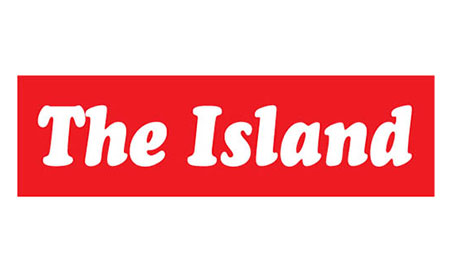
It is a well-known fact there is a cartel of a few rice millers with regard to the purchase of paddy and sale of rice in the country. The whole blame for this development should rest solely on the previous dispensations. Those past governments created a situation where ample opportunities were made available to a few wealthy persons with close connections to some powerful politicians of the day, for purchasing paddy from the farmers at very low rates and later sell the milled rice to the consumers at exorbitant prices according to their whims and fancies. Those in authority turned a blind eye to this operation as they benefited from the rice millers. They weakened the state mechanism which had been introduced by the previous government for purchasing paddy and converting such stocks into rice and making available that rice to the people at affordable prices through CWE and the co-operative outlets. The previous governments deliberately sabotaged the operation of this mechanism to pave the way for a few politically and otherwise close rice millers to exploit the rice market in the absence of any competition.
The Paddy Marketing Board was neglected by previous governments. Now this rice miller mafia has become a formidable force even the government cannot control. The moment the government steps in to remedy this situation, the rice miller mafia will go all out to thwart the government’s efforts at controlling the price of rice. These rice millers extend loans to the farmers at the commencement of paddy growing seasons and ensure that the latter sell their paddy only to them at the prices they fix. The indebted farmers have no alternative other than selling produce to those millers at very low prices stipulated by them.
Now the PMB has neglected all its paddy stores and mills, and the government has no money to be released to the PMB for purchasing paddy. The vacuum created by non-involvement by the government in the purchase of paddy offered a golden opportunity to the rice millers to purchase paddy at the prices they desire. This is the sorry state of affairs now prevailing in the country.
What would be the scenario if the government stepped in to solve this problem by using its power? It has neither money nor facilities for storing paddy and operational rice mills for milling the paddy. The rice miller mafia could ensure that there will be no rice in the market, at all. They can afford to do so. Therefore, I feel this is a very delicate issue that has to be handled diplomatically.
The government should come to a compromise with the rice millers wherein the millers will be able to dispose of their stocks of rice in the market at a reasonable price in line with the expenses they have incurred in purchasing paddy. The government should be flexible in deciding the price of rice taking into consideration the expenses incurred in acquiring such stocks of paddy by the millers and persuade the millers to release the stocks of rice they now hold to the market at the revised prices. Retaining the current controlled price of rice will aggravate the situation.
K. M. Suraweera
Veyangoda
-
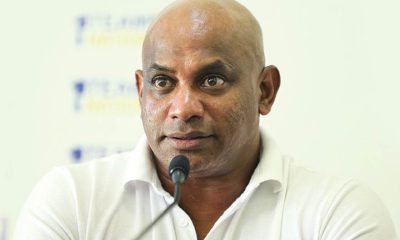
 Sports6 days ago
Sports6 days agoPathum will become world’s best batter, says Jayasuriya
-
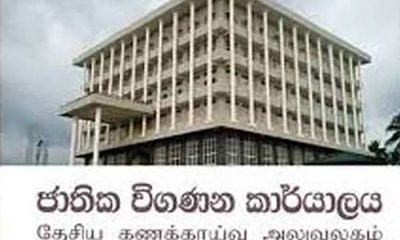
 News5 days ago
News5 days agoAbout 1,000 permits issued to SL migrant workers for electric vehicle imports misused
-

 Sports7 days ago
Sports7 days agoSri Lanka’s cricket revival continues
-
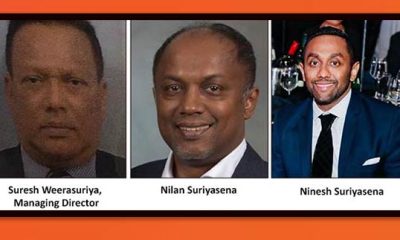
 News6 days ago
News6 days agoGoldi Sands celebrates its 50th anniversary
-
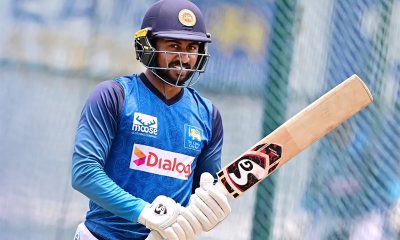
 Sports22 hours ago
Sports22 hours agoA lot at stake in Sri Lanka – South Africa Tests
-

 Editorial6 days ago
Editorial6 days agoSign of capitulation
-
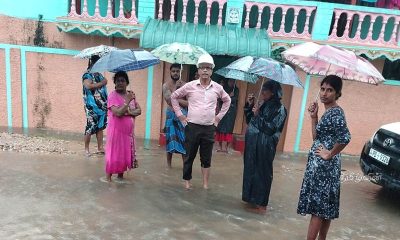
 News5 days ago
News5 days agoTorrential rains play havoc in Jaffna
-

 Features4 days ago
Features4 days agoSri Lankan mannerisms in Ischia, sex in Samoa and Kerala











